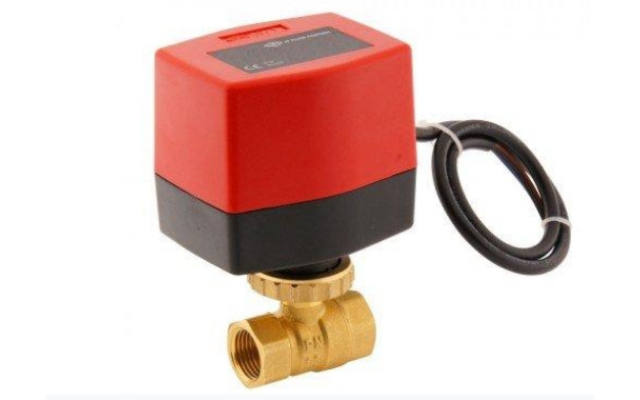Contributor: Charles Kolstad, Tameson
As the world is getting more and more dependent on energy, increasing energy efficiency and reducing energy consumption has become a real challenge. Different solutions are being explored to reduce the effect of excessive energy consumption and energy waste on environment. We often focus on big energy consumers like pumps, air conditioners, heaters, etc. when thinking about energy reducing options. But, small devices like a solenoid valve can be optimized to save energy as well. This article talks about different factors that can help in reducing the energy consumption of a solenoid valve.
Standard solenoid valve operation
A standard normally closed solenoid valve consists of a coil that gets energized and generates a magnetic field when current is passed through it. This causes the plunger in the valve to lift upwards, thus opening the orifice allowing the flow of fluid through it. For the orifice to remain open for constant flow, a steady amount of electric supply is required. Once de-energized, the plunger pushes downwards, blocking the flow of the fluid.
Factors that affect energy consumption of solenoids
Various factors affect the energy consumption of a solenoid valve. Some of these factors are discussed below. Considering them during the design phase of your application can be beneficial for energy savings.
- Dimension: The larger the size, the more energy it consumes. It is thus favorable to use the optimal valve dimensions as required for the application.
- Design: Energy consumption pattern for the solenoid valve can significantly differ based on its design.
- Normally Open/Normally Closed: The energy consumption based on normally open or closed design is based on the cycle pattern. If the valve requires to be open most of the time, a normally open valve is the best option and vice versa from an energy consumption standpoint.
- Direct operated/Indirect operated: Indirect operated valves generally consume less energy than direct operated valve as they don’t require a constant supply of energy to keep the valve open. However, indirect operated solenoid valves are not compatible for all kinds of application.
- Cycle pattern: The number of opening and closing cycles of the valve and the response time for these opening and closing of valve affects the energy consumption pattern.
- Peak/Inrush current during opening: The solenoid requires peak current to energize and lift the plunger of the valve. To hold the plunger in its open position, a reduced holding current is required. The overall energy consumption is dependent upon the peak and holding current and if the current gets dropped to the holding current.
- AC/DC power: DC solenoid valves usually consumes more electricity than AC solenoid valve.
- Additional circuitry: By creating the temporary peak current while opening the valve, additional circuitry can help in reducing the overall energy consumption.
- Latching solenoid valve: Latching solenoid valves are great energy savers especially for applications where the valve is required to remain open for a long period of time.
Properly dimension a valve based on the system requirements (Kv-value)
As discussed earlier, the larger the dimensions, more energy is required to operate the valve. Although the valve needs to be large enough to accommodate the flowrate it is exposed to, over-dimensioning leads to over-consumption of energy. Thus, it is necessary that the valve size be the optimum size based upon the flow rate required for your application.
Kv-value: Kv value is the amount of flow in a valve with a pressure loss of 1 bar. It is the flow coefficient in metric units. The Kv value can be calculated as:
Kv= Q√∆P
Where, Q is the flow rate (m3/h) and ∆P is the pressure loss in the valve (bar).
Cv-value: Cv value is the flow coefficient value in imperial unit. It is the US equivalent of Kv and is measured in Gallons per minute (gpm) of flow with pressure loss across the valve of 1psi. The following formula can be used to convert Cv into Kv and vice versa.
Kv=0.865 Cv
Cv=1.17 Kv
Design or type of solenoid valve
The difference in design and types of a solenoid valve can significantly affect the energy consumption pattern for the solenoid valve.
Normally Open or Normally Closed:
A ‘Normally open’ solenoid valve remains open when the valve is de-energized. For this valve to remain closed, constant energy supply is required. Conversely, a ‘Normally closed’ solenoid valve remains closed when the valve is not energized. Depending on if your application requires the valve to remain open or closed, these valves can be chosen for low energy consumption. If the application requires longer open valve hours in a day, a normally open valve is the best option.
However, valves like an electrical ball valve consumes energy only during opening and closing process and will consume much less energy than normally open or normally closed valve. Thus, valve options, design, and types should be given thought during the solenoid valve selection process.
Direct operated or Indirect operated:
A direct operated solenoid valve requires a magnetic force from the solenoid to operate. A constant supply of energy is required to keep the coil magnetically energized. On the other hand, the indirect operated solenoid valve uses the pressure differential over the ports to open or close the valve. It means that once the power is supplied to open the valve, it can resort to low power as pressure differential control the rest of the flow. Thus, indirect operated solenoid valves use much less energy as compared to direct operated solenoid valve.
Cycle pattern of the solenoid
Cycle pattern is dependent upon the number of opening and closing of valve and the corresponding time to stay in that position as required for your application. The cycle pattern and the design can affect the energy consumption of the valve. As discussed above, a normally open and normally closed design have different energy consumption patterns. Thus, the design and cycle patterns of a valve should be compatible with each other in order to determine optimal energy required for your application. Refer to Tameson’s solenoid valve cycle pattern and energy consumption overview table to determine the energy consumption of the valve for the cycle pattern of your application.
Peak currents during opening
The peak current that is required for lifting the plunger up and opening the valve is much larger than the current required to hold the plunger in position. Different applications may require valves with different current use.
AC or DC power
AC solenoid valves require strong peak current to open the valve. Once the valve is open, the current drops to the level which is just enough to hold the plunger in place and keep the valve open and running. This helps in reducing the overall power consumption. On the other hand, DC solenoid valves require a constant steady flow of current for its operation resulting in high consumption of electricity as compared to AC solenoid valves. However, DC solenoids can be made more energy efficient with the addition of external circuits.
Additional circuitry to reduce the holding current
For DC-operated solenoid valves, additional circuitry can help reduce energy consumption. Additional circuitry generates a temporary spike of current to open the valve. The current can then be lowered just enough to keep the valve open. A smaller coil can be used for operating the valve as it is only required to keep the valve open. Thus, the overall consumption of the energy is reduced.
Latching solenoid valves
A latching solenoid valve is a great energy saving option as compared to a standard solenoid valve. In the standard solenoid valve, once the electricity is supplied and the magnetic field lifts the plunger upwards, a constant supply of electricity needs to be provided to keep the valve open. A latching solenoid valve has a small permanent magnet built-in to the top of the valve. The magnet itself is not strong enough to activate the plunger but it is strong enough to hold the plunger once the valve is energized and plunger is lifted. Once the lifted plunger is held by the magnet, the energy supply can be cut off. The valve will remain open until the current of opposite polarity is applied, which in turn closes the valve. Latching solenoid valves are very effective in energy saving and are especially useful in applications that require the valve to be open for long periods of time. They are especially useful and common in battery powered applications.
Electric actuated ball valves can be an energy-efficient alternative for solenoid valve
Electric actuated ball valves are very energy efficient as they consume electricity only to open and close the valve. The valve uses an electric actuator to rotate the ball valve 90° to open or close the valve. If your application does not require frequent opening and closing cycles, electric actuated ball valves might be the best option for your application. However, in case of a power failure, the electric ball valve stays in its last operating position unlike a solenoid valve which returns to its default position. The electric ball valve may need to be returned to its safe position manually to avoid potential issues.
https://empoweringpumps.com/drinking-water-valves/







Really informative article! Another way to minimize energy consumption would be to provide the necessary voltage to the coil to pull the plunger in. Once seated, the voltage can be dropped to maintain the position.
Thanks for making it clear that bigger solenoid valves consume more energy. I need one that won’t make my electric bill go up. I’ll look for a small one that can still get the job done.